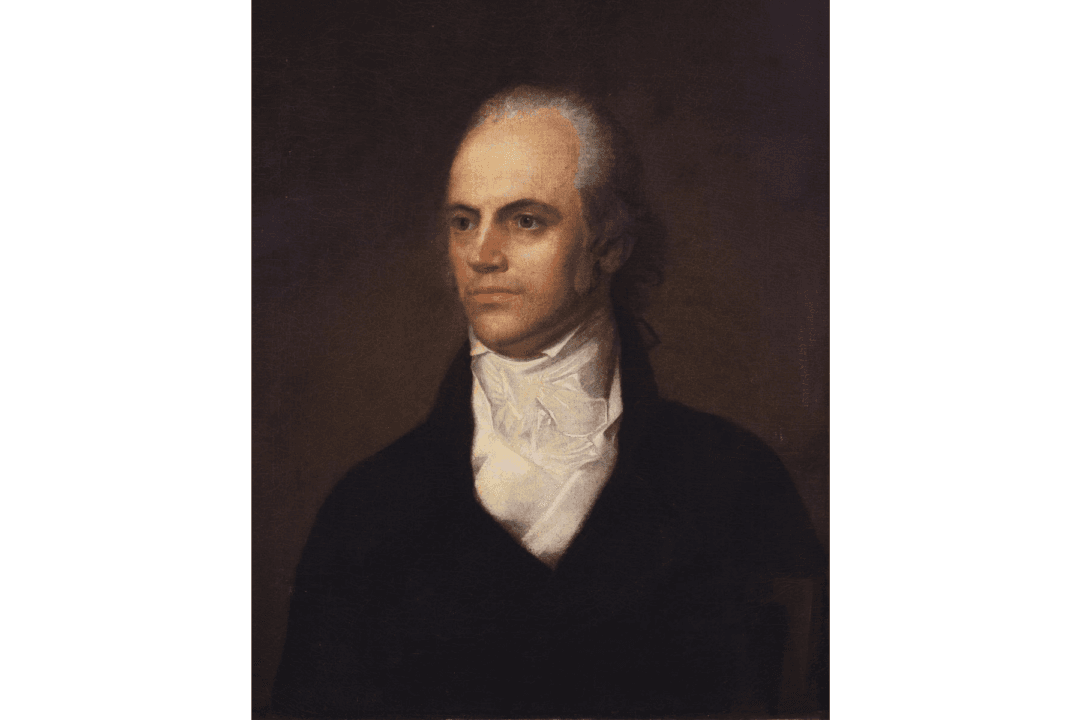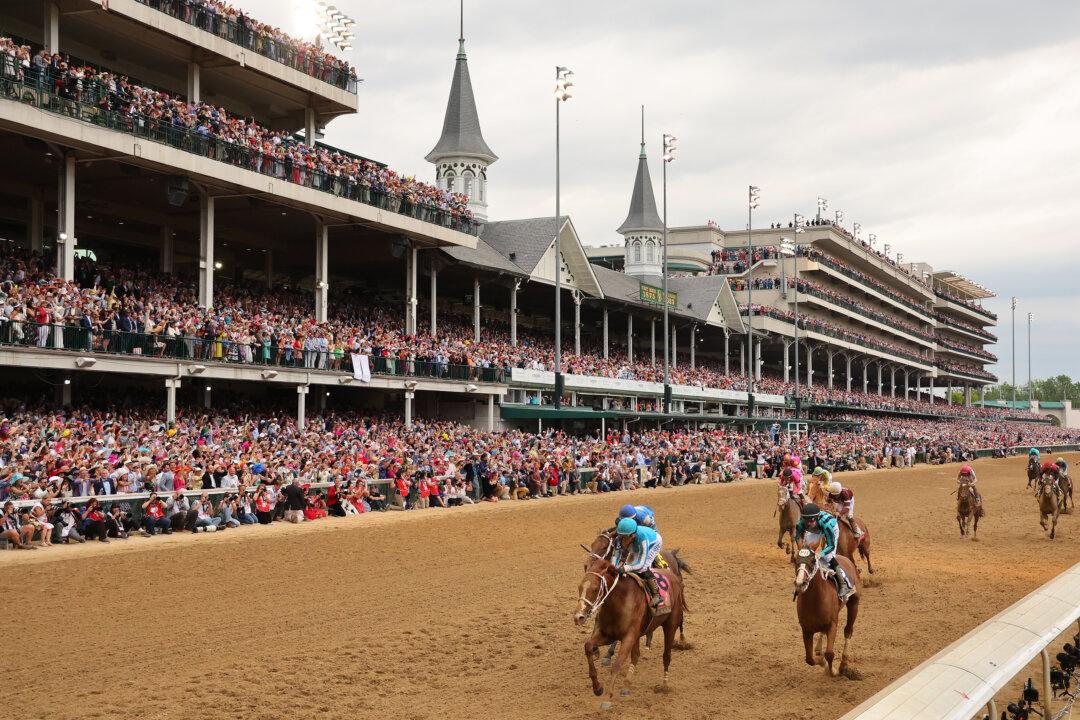Alexander Hamilton was dead and buried, killed by a gun fired by Aaron Burr. At the height of his political power, Burr had killed Hamilton, and, much like Hamilton on the day he was shot, July 11, 1804, Burr’s political life would enter its death throes on July 12—the day Hamilton died.
Burr had witnessed a steady rise politically, from joining the Continental Army during the Revolutionary War to becoming attorney general for New York, then serving as a senator from 1791 to 1797. He was one vote shy of winning the 1800 presidential election and, therefore, had to settle for the vice presidency under Thomas Jefferson. Burr, however, had spurned too many political foes and allies alike, and, after the duel with Hamilton, his rise had come to an end.

After Hamilton’s death, both New York and New Jersey indicted him for murder, though he never stood trial. Burr returned to Washington to finish out his term as vice president and president of the Senate. The latter proved monumental, as he oversaw the impeachment trial of Supreme Court Justice Samuel Chase, which had been instigated by Jefferson. The Senate acquitted Chase on March 1, 1805.
The following day, Burr stood before the Senate and announced his resignation to the Senate. He had been replaced by George Clinton, of New York, for vice president during the 1804 election. His party, the Democratic-Republicans, had seen the writing on the wall. Burr’s resignation came two days before Jefferson began his second term. Burr proclaimed that the Senate
“is a sanctuary; a citadel of law, of order, and of liberty; and it is here—it is here, in this exalted refuge; here, if anywhere, will resistance be made to the storms of political phrenzy and the silent arts of corruption; and if the Constitution be destined ever to perish by the sacrilegious hands of the demagogue or the usurper, which God avert, its expiring agonies will be witnessed on this floor.”
Go West
Burr’s political life in the East was over, and he now looked to the new lands in the West. On April 30, 1803, the Louisiana Purchase was signed, practically doubling the size of the United States. This new territory seemed ripe for political leaders, and Burr, known for his ambition, pursued the opportunity.Putting a Plan in Place
After his time in the nation’s capital ended, Burr was confronted with the dichotomy between opportunity and loyalty. He chose the former—a seemingly natural inclination for Burr. During the same month as his resignation, he met with Anthony Merry, the British minister to the United States. According to Merry, the two met in Philadelphia to discuss how “the inhabitants of Louisiana seem determined to render themselves independent of the United States and the execution of their design is only delayed by the difficulty of obtaining previously an assurance of protection and assistance from some foreign power. ... It is clear that Mr. Burr means to endeavor to be the instrument for effecting such a connection. ... Mr. Burr observed it would be too dangerous and even premature to disclose to me at present the full extent and detail of the plan he had formed.”A plan, however, was being formed. He had suggested to Merry that he would require several frigates at the mouth of the Mississippi River to prevent an American blockade, as well as a loan of about 100,000 pounds.
Burr then left Philadelphia to inspect the western lands. He arrived in Pittsburgh at the end of April, planning to meet his old friend, Wilkinson. The meeting had to wait as Wilkinson, currently serving as the territorial governor of Louisiana, was delayed. Burr, therefore, boarded a 60-foot houseboat and made his way down the Ohio River.

Burr continued down the Ohio River, stopping in Cincinnati and Nashville before arriving at Fort Massac, located on the river at the southern tip of Illinois today. Here, he met Wilkinson, whom he had been communicating with via coded letters based on a cipher system Wilkinson had created.
Along with a barge, Wilkinson provided Burr a letter of introduction for his arrival in New Orleans. Upon entering in the port city, Burr made the acquaintance of a wealthy merchant, Daniel Clark, who, on Burr’s behalf, began inquiring about the strength of local Spanish forts and the public sentiment toward a Mexican irruption from Spain. He also promised $50,000 towards Burr’s imperial expedition with the hopes of becoming “a duke” in the new Burr empire.
The Unraveling
In August 1806, however, his idea began to unravel when he discussed his goals with Col. George Morgan. Morgan, completely shocked by Burr’s comments, sent a letter to Jefferson, informing him of Burr’s plans—it was the first Jefferson had heard of the plan.When Wilkinson received Burr’s latest correspondence about his impending arrival with armed men, he suddenly soured on Burr’s plans and sent a letter of warning to Jefferson. He informed the president that an expedition planned to sail from New Orleans in February and land at Vera Cruz.
Most of the boats built for the invasion were confiscated shortly before their departure. Many of the armed men who planned to be involved now either dispersed or were too disappointed in the recent outcomes to continue. Burr, arriving with Blennerhassett and a remnant of his confederates in Bayou Pierre, just north of New Orleans, discovered Wilkinson’s betrayal. Burr immediately issued a statement of innocence, but that hardly mattered.
A Case of Treason
As more rumors and facts about Burr’s actions circulated, another warrant for his arrest was issued. Burr planned to take refuge in Florida, but while in Alabama, he was arrested and taken by a nine-man military escort to Richmond. On March 26, he stood before Chief Justice John Marshall, now known as the Father of the Supreme Court.
Burr’s bail was set for $10,000, which was paid by several locals, thus freeing Burr from custody. It was during this week in history, on May 22, 1807, that Burr was brought before the grand jury for the charge of treason. The trial itself, however, did not begin until Aug. 3, primarily due to waiting for one of the trial’s primary witnesses: James Wilkinson.

The case became one of America’s most famous, involving some of the nation’s most famous, infamous, and important figures, including Burr; Marshall; Wilkinson; co-conspirator Jonathan Dayton, who was the youngest signer of the Constitution; Burr’s defense council, which included Edmund Randolph, a former secretary of state and a delegate at the Constitutional Convention and Charles Lee, a former attorney general; the prosecution, which included the future attorney general, William Wirt; and, to an extent, Jefferson, who had unprecedentedly been sent a subpoena by Marshall for papers concerning the case.
On Sept, 1, 1807, the jury concluded that “Aaron Burr is not proved to be guilty under this indictment by any evidence submitted to us. We therefore find him not guilty.”
Whether Burr committed treason by attempting to create another country on the continent, or if he solely planned an ill-conceived invasion of Mexican lands remains a topic of debate to this day.








